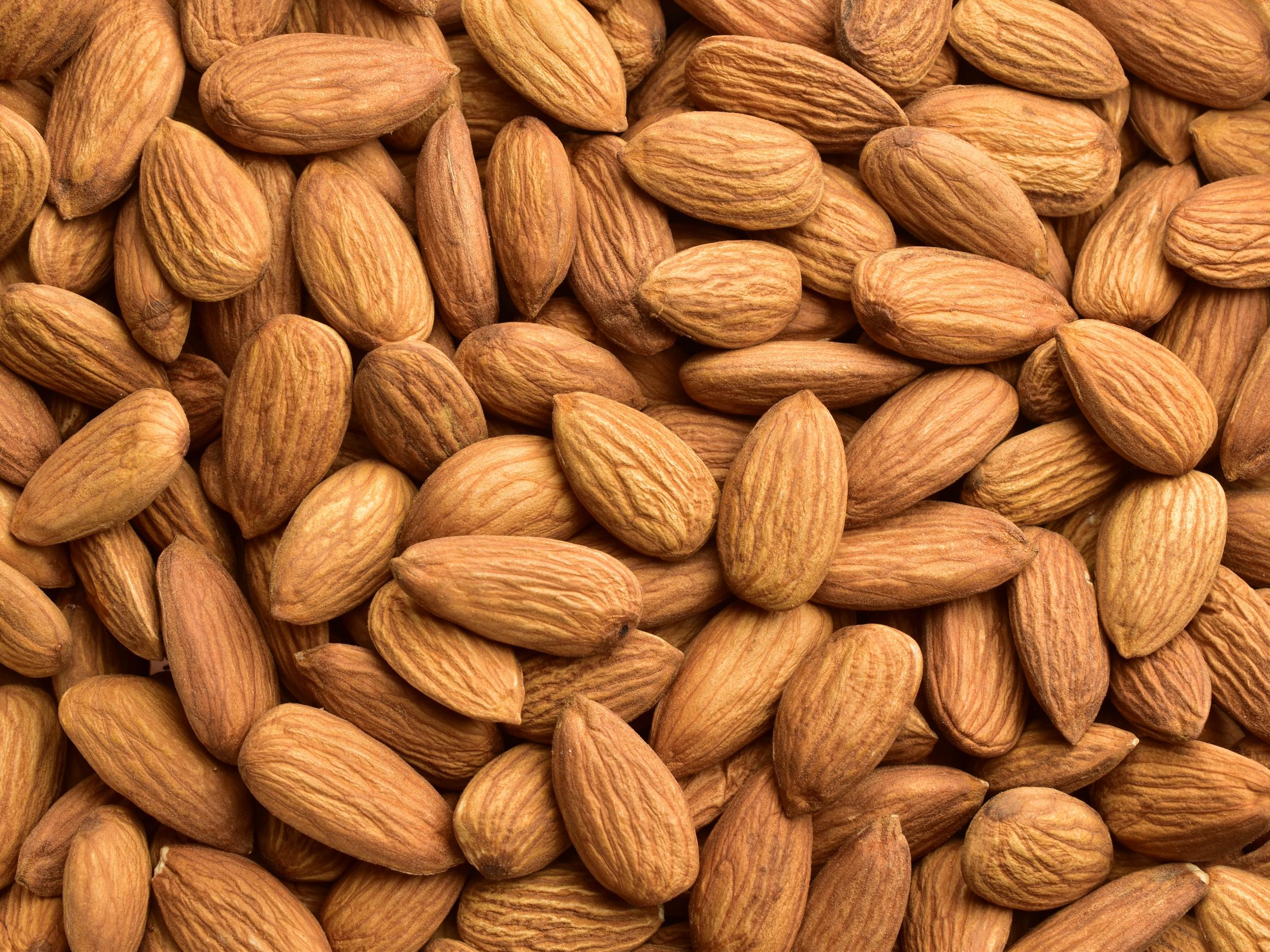Are almonds really as sustainable as we think, or just a waste of water?
With a huge water footprint involved in the nut’s production, where most are exported outside of California where they’re grown, can the system be turned around? Sophie Egan explores

Until about 2011, almonds were sitting pretty. Americans were finally getting excited about regularly eating something genuinely good for them.
Almond butter had penetrated the market to challenge peanut butter as the only game in town. But then, a scathing report brought the concept of a food’s ‘water footprint’ into the mainstream, and the almond became a poster child of foods that require an irresponsibly high amount of water.
A water footprint is the amount of water involved in growing, processing, and delivering a product to us.
All together, the US agriculture industry sucks up about 80 per cent of the country’s available fresh water. In part because of climate change (drought, extreme temperatures, erratic rain), by the year 2025, two-thirds of the people on this planet could face water shortages. That’s what’s at stake here.
More than 80 per cent of almonds eaten around the world are grown in California. One of the biggest gripes about the high toll on California’s drought-stricken agriculture system is that two-thirds of the almonds grown are exported. This ‘virtual water’ gets shipped abroad.
Also, wildlife comes under threat when water levels reach dangerously low levels, as when the endangered king salmon in Northern California reportedly became imperilled by water being diverted to almond farms.
So, it was a big deal when we learned that it takes an entire gallon of water just to produce one almond. Ouch. Suddenly something long seen as a sign of a health-conscious eater was making shoppers think twice.
All of this is true, but two caveats are warranted:
1. The high footprint is in part because, to date, most almond growers haven’t been incentivised to use water efficiently. Almonds are an economic powerhouse for California, and my sense is that growers either have historically had such cushy water rights or by growing such a lucrative crop could afford to buy senior water rights from others, they’ve not been motivated to be frugal.
Flood irrigation has long been the norm. But that has started to change post-exposé. Farmers have been shifting to more precise techniques like drip irrigation, resulting in an at-level of total water consumption as an industry – despite having doubled almond acreage in California over the past two decades.
2. Almonds get the most heat for high water usage, but other foods require a lot too. It takes 128l to produce your cup of coffee. It takes 2,045l to make just one bar of chocolate. And it takes a whopping 3,000l to make a Whopper. The comparison with animal-based foods overall is especially unfavourable. Yet that big-picture message often gets lost in the fray.
It’s not to say we turn a blind eye to almonds’ thirsty ways, but we have to weigh that issue against the benefits of almonds, the broad appeal they have for Americans, and their availability to most people. In other words, we have to consider them in the context of other foods we’re choosing between. Nutritionally, almonds (and pretty much all nuts) offer healthy fats, nutrients, and a good amount of protein.
They can be high in calories, but worth it, especially for how full you often feel after eating just a handful. They’re best consumed instead of less healthy snacks like chips, crackers, cookies, or candy. Consistently, large, long-term studies – such as the Adventist Health Studies, the Iowa Women’s Health Study, and the Nurses’ Health Study – show that regular nut eaters have a lower likelihood of having a heart attack or developing heart disease.
As much as a 30 to 50 per cent lower chance, in fact. And a lower risk of type 2 diabetes. There just aren’t that many foods with such a well-established body of evidence to support their being a regular fixture in our diets for long-term health outcomes.
With every food choice you make, ask yourself, as opposed to what? If we’re talking about a handful of almonds versus a stick of string cheese, which wins? Cheese wins for a lower water footprint. But almonds win for health and carbon footprint. The carbon footprint of a food is the amount of greenhouse gases, especially carbon dioxide, emitted to grow, process, and deliver it to us. Or let’s take breakfast.
Almond butter toast instead of a bacon-egg breakfast sandwich? Almond butter toast across the board. Or in your coffee, almond milk’s carbon footprint is about half that of dairy milk, according to an analysis by Planet Vision. Nutritionally, it depends on the brand and how each type of milk is made. Water-wise, almond milk wins over dairy (cows need a lot of water).
But of course, there are plenty of other tasty nuts with comparable health benefits, great flavour, and a water footprint similar to or even lower than that of almonds. Walnuts and pistachios top the list. Peanuts are the lowest water users of all the nuts, and the most affordable.
As for how almonds affect others, don’t overlook food allergies. Tree nuts (Brazil nuts, cashews, hazelnuts, pistachios, and walnuts, in addition to almonds) are one of the eight most common allergens in the United States.
Extracted from 'How To Be A Conscious Eater', by Sophie Egan, published by Workman Publishing Company
Subscribe to Independent Premium to bookmark this article
Want to bookmark your favourite articles and stories to read or reference later? Start your Independent Premium subscription today.

Join our commenting forum
Join thought-provoking conversations, follow other Independent readers and see their replies